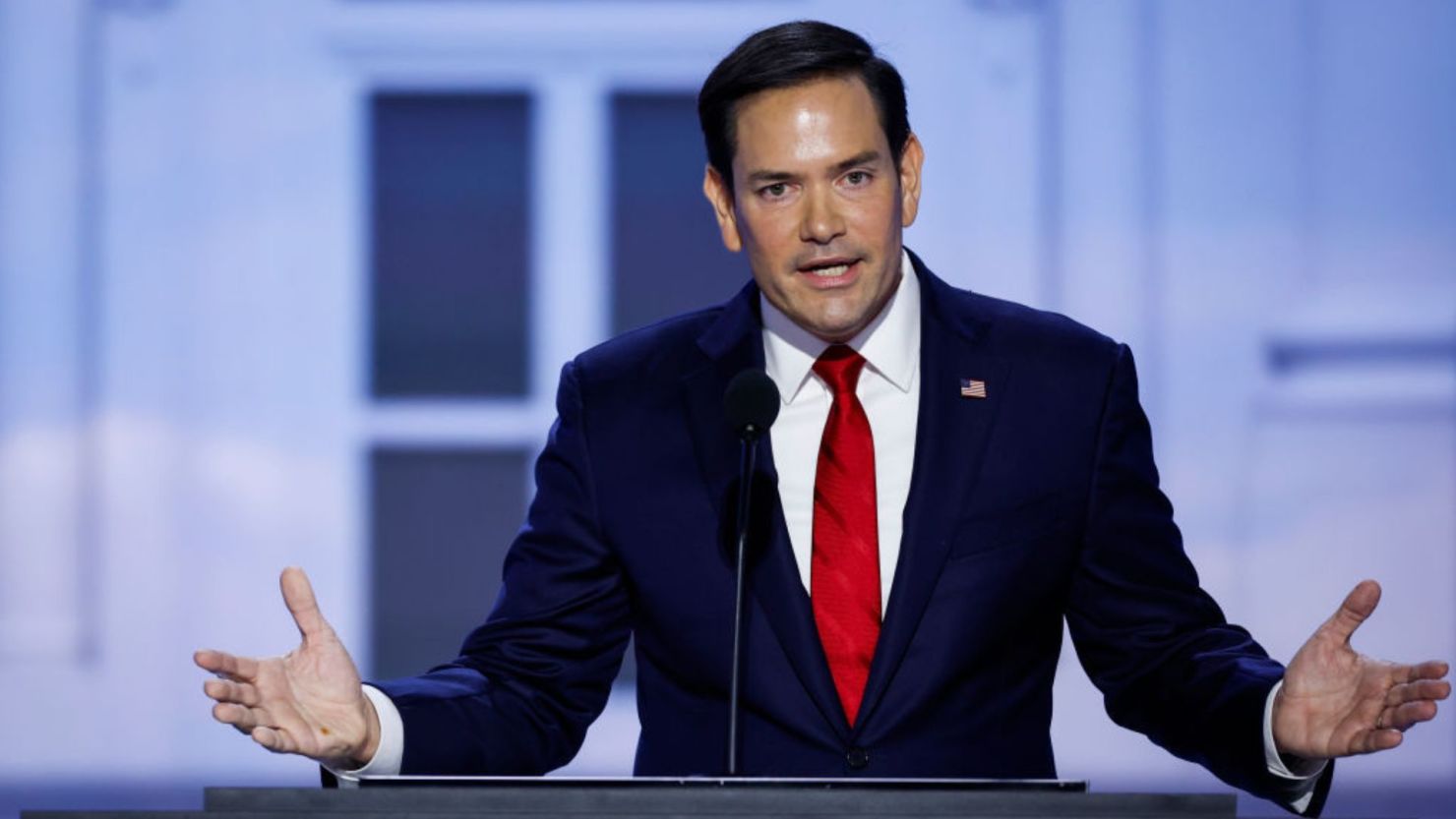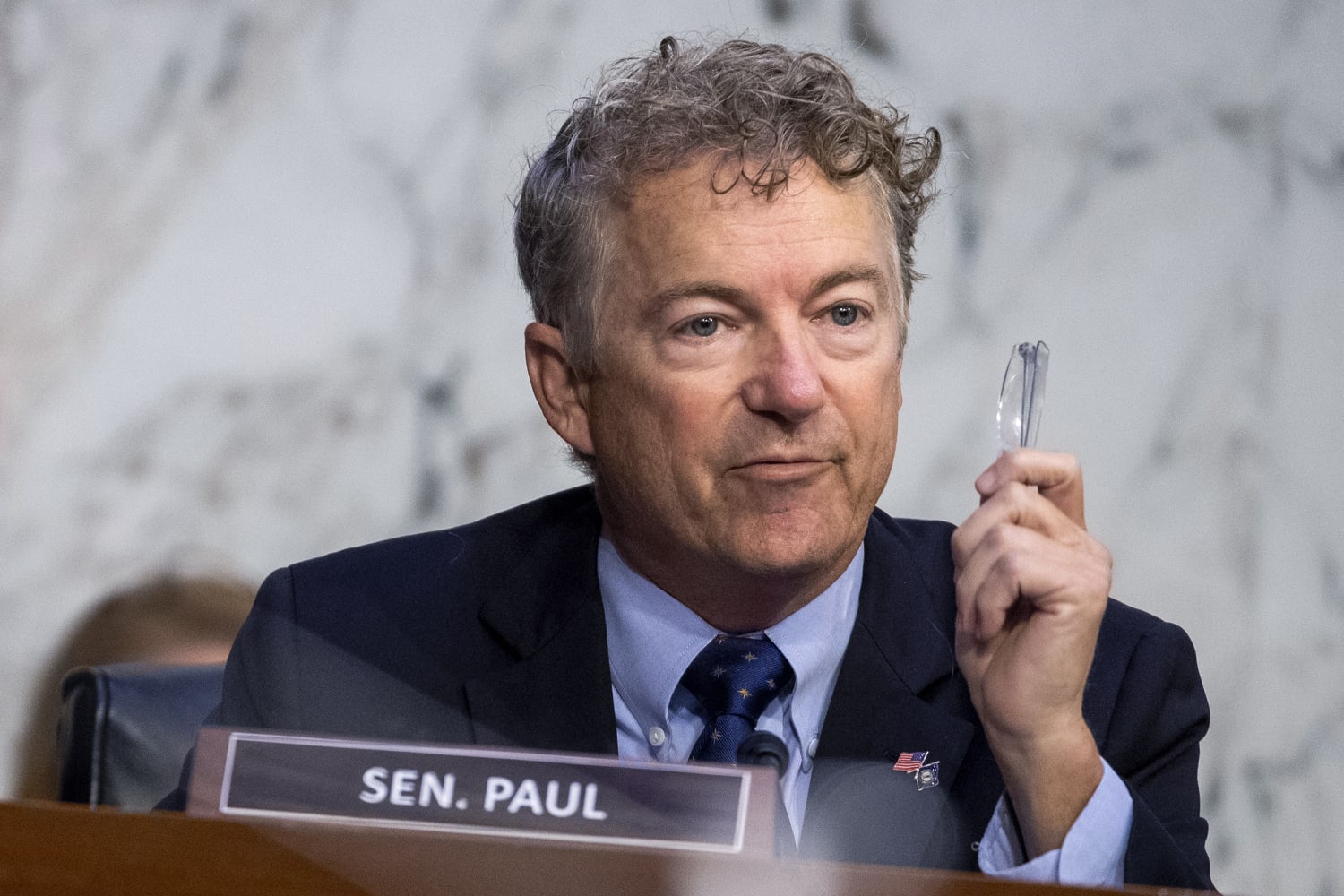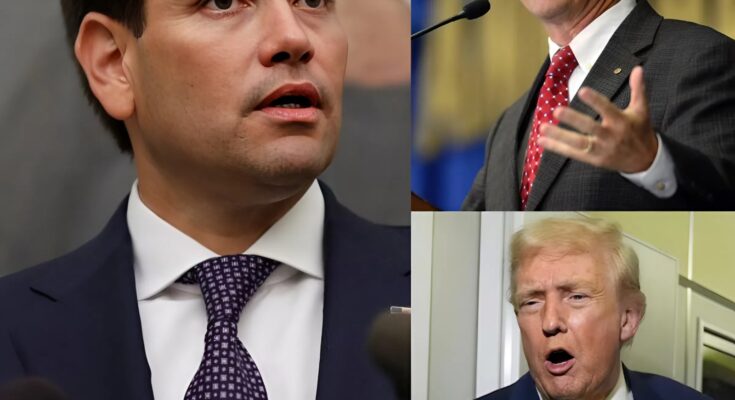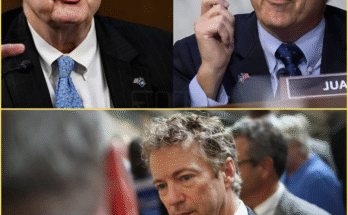The debate in the Senate chamber on federal spending reached a fever pitch when Senator Marco Rubio, known for his measured, precise demeanor, suddenly rose from his seat and confronted Senator Rand Paul. The atmosphere, already tense with anticipation over the omnibus bill, snapped like a drawn bowstring. Rubio’s gaze locked on Paul, his expression cold and unwavering, and with a deliberate tone, he spoke exactly six words: “You betrayed your constituents.” The room froze instantly. Senators, staffers, and reporters alike fell silent, unable to process the sudden, sharp accusation. Notes slid off desks, pens fell, and even Senate Majority Leader Schumer, gavel in hand, remained frozen, as though time itself had paused to absorb the impact of Rubio’s words. The silence lasted twenty-two seconds, yet it felt eternal, a verdict delivered in mere syllables.
Rubio didn’t allow the moment to linger unnecessarily. With controlled intensity, he continued, advancing a step closer to Paul, commanding the floor without raising his voice. “Kentucky didn’t send you to indulge in spending. You voted YES on omnibus 2025 — $500 billion in pork-barrel projects, cuts to veterans’ pay. 68% of the base calls you a RINO. That’s not freedom. That’s betrayal.” His words were precise, each phrase calculated to maximize impact and convey both moral and political weight. Rubio meticulously enumerated Paul’s legislative decisions, framing them not as partisan maneuvering but as an unequivocal violation of public trust. The accusation struck a nerve, and the reaction was instantaneous. Paul, visibly rattled, rose from his chair and walked briskly toward the exit. His fingers trembled as he typed a rapid defense into Twitter, but the moment had already passed into political legend.
Social media erupted immediately. Within just ninety minutes, the clip of Rubio’s six words and pointed follow-up statement had garnered 312 million views, trending globally. Hashtags such as #RubioIceStrike dominated platforms, while political commentators scrambled to analyze the clip, frame by frame. Analysts emphasized the unprecedented nature of the confrontation: Rubio had delivered not only a verbal rebuke but a symbolic assertion of accountability, leveraging both moral authority and public visibility to amplify the consequences of Paul’s vote. Former President Donald Trump, never one to ignore high-profile political theater, sarcastically commented, “RAND GOT TORPEDOED!” Further inflaming the debate and solidifying Rubio’s position in the public eye.

The broader context of the confrontation shed light on the gravity of Rubio’s remarks. The omnibus bill of 2025 had been controversial from the outset, with critics highlighting expansive spending, cuts to key social programs, and allocations perceived as politically motivated or wasteful. Paul’s affirmative vote on the bill, despite public disapproval from a majority of his constituents, provided Rubio with both factual grounds and rhetorical opportunity. The senator’s strategic choice to focus on quantifiable elements — $500 billion in spending, cuts to veterans, and constituent backlash — framed his attack as irrefutable and grounded in measurable evidence. The precision of Rubio’s statements enhanced their viral potency, ensuring that the confrontation would dominate both political discourse and social media narratives.
As Paul retreated to issue his digital defense, Rubio did not pursue personal attacks beyond the immediate critique of legislative decisions. Instead, he emphasized principle, loyalty, and public accountability. Observers noted that his demeanor — cold, resolute, and measured — contrasted sharply with the emotional, reactionary tone often observed in political disputes of this magnitude. Rubio’s approach leveraged the spectacle of silence and anticipation, demonstrating how a calculated pause and a succinct phrase could command attention more effectively than prolonged speeches or extended debates. The power of his six words — “You betrayed your constituents” — was amplified by the context, timing, and delivery, transforming what might have been a routine debate into a defining political moment.
Following the exchange, the reaction in the chamber and beyond was immediate and multifaceted. Senators and staffers discussed the implications in hushed tones, analyzing both the rhetorical skill and political impact of Rubio’s intervention. The debate quickly transcended the chamber itself, with national news outlets, political blogs, and opinion columns dissecting the confrontation. Analysts highlighted the combination of substance and performance: Rubio’s critique addressed legitimate policy concerns while simultaneously leveraging drama and presence to dominate the narrative. The incident demonstrated the evolving interplay between traditional legislative processes and the omnipresent influence of social media amplification in modern politics.
Public response mirrored the intensity of the debate itself. Citizens engaged across multiple platforms, expressing support, condemnation, or nuanced perspectives on the ethical and political dimensions of the confrontation. Supporters lauded Rubio for holding Paul accountable and for speaking truth to power, emphasizing the need for elected officials to prioritize constituent interests over personal or partisan considerations. Critics argued that Rubio’s tactics bordered on theatrical aggression, questioning whether such confrontations enhanced legislative discourse or merely deepened polarization. The debate became a case study in modern political communication, illustrating how strategic timing, precise language, and public visibility converge to create high-impact political events.

In addition to the immediate social and political reverberations, the event had procedural implications. Congressional aides, communications teams, and political strategists evaluated the potential consequences for future hearings, votes, and public statements. The optics of the confrontation suggested a model for leveraging singular moments of moral clarity and rhetorical precision to assert dominance in both policy debates and public perception. Rubio’s actions underscored the importance of narrative control in legislative settings, demonstrating how a well-timed confrontation can extend beyond immediate policy implications to shape broader cultural and political discourse.
The viral nature of the exchange also prompted deeper analyses regarding political accountability. The framing of Rubio’s remarks — focusing on measurable actions, public perception, and ethical obligations — highlighted the critical role of transparency in democratic governance. Constituents, media observers, and policy advocates scrutinized the language and logic of the confrontation, engaging in discussions about legislative responsibility, public trust, and the mechanisms through which elected officials are held accountable. In this sense, the confrontation transcended mere theatrics, providing a lens into the complex dynamics of governance, representation, and public oversight.
Even as the immediate clip circulated endlessly, a 15-second sequence captured Rubio’s next action, further cementing the moment in public consciousness. Without uttering another word, he placed a file on the table, performing an action whose significance was magnified by timing, context, and audience interpretation. The brevity and precision of the movement underscored his mastery of political theater: each gesture, each pause, and each uttered phrase was deliberate, calculated to maximize impact. Senators and observers alike were left stunned, recognizing that the debate had effectively ended the moment Rubio delivered his six words.
Media analysis emphasized the combination of strategy, timing, and content that produced such a viral political moment. Scholars of political communication pointed to Rubio’s use of silence, direct confrontation, and strategic framing as exemplary in modern legislative performance. The incident became a teaching point in political science courses, media workshops, and communications seminars, illustrating the intersection of policy knowledge, rhetorical skill, and performance dynamics in shaping national narratives.
As the day progressed, the long-term consequences of the confrontation began to take shape. Paul’s subsequent statements on social media, public appearances, and policy decisions were scrutinized for signs of concession, justification, or political recalibration. Rubio’s standing among constituents, political allies, and media commentators was bolstered, showcasing how decisive, well-calibrated action can reinforce credibility and influence. The incident exemplified the contemporary reality of American politics, where the immediacy of media coverage, the permanence of social media, and the intensity of public scrutiny converge to amplify the stakes of legislative engagement.

Ultimately, the confrontation between Rubio and Paul in the Senate chamber will be remembered as a defining moment in the 2025 legislative session. It demonstrated the power of concise, principled communication; the strategic use of timing, gesture, and silence; and the transformative impact of viral dissemination on public perception. The events of that day serve as a reminder that in modern politics, every word, pause, and movement is subject to scrutiny, interpretation, and amplification, shaping both immediate outcomes and the broader trajectory of national discourse.
The 312 million views, the trending hashtags, and the immediate reactions are indicative of a new era of political engagement — one where a single, carefully chosen statement can ripple across the globe, influencing opinions, conversations, and strategic decisions. Rubio’s six words — “You betrayed your constituents” — encapsulate the potency of rhetorical precision and the enduring consequences of speaking truth to power, resonating far beyond the walls of the Senate chamber and leaving an indelible mark on the landscape of American politics.



